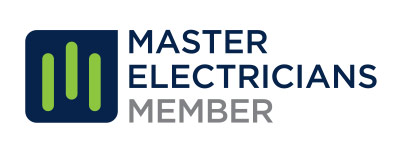ScanPro’s solution can be deployed onto medium to large scale solar facilities which have track access available behind the fixed tilt or tracker arrays.
Value delivered

Title
Lorem ipsum dolor sit amet, consectetur adipiscing elit, sed do eiusmod tempor incididunt ut labore et dolore magna aliqua. Habitasse platea dictumst quisque sagittis purus sit amet.

Title
Lorem ipsum dolor sit amet, consectetur adipiscing elit, sed do eiusmod tempor incididunt ut labore et dolore magna aliqua. Habitasse platea dictumst quisque sagittis purus sit amet.

Title
Lorem ipsum dolor sit amet, consectetur adipiscing elit, sed do eiusmod tempor incididunt ut labore et dolore magna aliqua. Habitasse platea dictumst quisque sagittis purus sit amet.

Title
Lorem ipsum dolor sit amet, consectetur adipiscing elit, sed do eiusmod tempor incididunt ut labore et dolore magna aliqua. Habitasse platea dictumst quisque sagittis purus sit amet.

Title
Lorem ipsum dolor sit amet, consectetur adipiscing elit, sed do eiusmod tempor incididunt ut labore et dolore magna aliqua. Habitasse platea dictumst quisque sagittis purus sit amet.
This is a drive past thermographic scan which has a main focus on addressing MC4 DC connector failure, and then secondly the location of defective PV modules. Overheating MC4 connector issues are impacted by many factors and are a major cause of system fires. This is a growing issue and concern for the solar industry.
ScanPro’s solution can be deployed onto medium to large scale solar facilities which have track access available behind the fixed tilt or tracker arrays.
We collect an accurate dataset that covers the operating temperatures of the DC wiring harnesses, connectors and the PV modules. This provides our clients with one of the most comprehensive forms of live testing to ever be performed on their site, and the final results comprehensively cover risk mitigate and quality control of all live electrical in-field threats.
ScanPro’s solution can be used to address:
- Comprehensive commissioning requirements
- Concerns around site safety
- Insurance or warranty claims and surveys
- De-risk and threat control
- Trouble-shooting and fault finding
- Operations and Maintenance requirements
- Independent asset owner service
MC4 connectors and string wiring failure is the largest contributor of PV system power losses, far higher than PV module related defects. Global studies have found string wiring related losses accounted for over 42% of production loss while the next closest PV module related losses ‘cell failure’ was only 4%. However, the documented 42% string defect findings does not take into account the degradation that is manifesting in the system prior to open circuit occurring. What this means is, the slow process in the breakdown of field terminated DC connection found either behind the module or within the combiner box is unidentifiable using drones. This is due to the aerial drones inability to see these terminations.
What is causing these issues?
- Lack of good training for installation
- Cross branding/mating connectors
- Poor quality manufacturing materials used
- Extreme environmental exposure
- Poorly installed – plug damage, cut or improperly terminated
- Corrosion and moisture ingress present
- Lack of regular preventive maintenance
- Bad design – Better methods or improvements are required
The vast majority of aerial thermography drone surveys being conducted today are not solving the major loss of production issues, and they are not able to solve the real threats of system fires the industry faces. Only once the circuit breaks and creates an open circuit situation is it visible by the drone. Not before. This is a major factor why operators are still suffering fires onsite.
So how can we solve this problem?
Using a back of PV module inspection method, not airborne, we can observe the working condition of the circuit wiring at the live termination points (MC4’s). On the very first day inspection starts we can start to compile a list from good to bad, and we can grade these into categories if required. Much like you find in a traditional aerial thermography report.
More importantly, we can start to physically flag the defect location straight away so repairs can commence. We have the ability to supply repair teams visual and digital guidance location services instantly. You do not need to wait 2 weeks for an aerial thermography report to arrive, corrective repairs can commence on the very first day of scanning. This makes the site safer, and reduces offline modules from impacting production.
ScanPro’s reports have the ability to identify:
- More accurate temperature readings
- Higher resolution and quality images than drone
- Thorough analysis of PV Module related defects
- Warranty claim quality data for reports
- Module serial number identification and logging
- Vegetation growth mapping
- Tracker displacement mapping – sinking piles or impact damage
- Detailed MC4 plug thermal assessment
- DC wiring harness installation flaws
- DC wiring harness thermography
- De-risk your site from threats of fire
- De-risk your site from outages
- Starting making repairs the same day scanning starts
- Physical visible markings made in-field to speed up repair work
- Reduced String outages
- Custom and Quality reporting that is compliant with IEC TS 62446-3
- Corrosion identification on steel trackers
- 3D map created of your site
Trusted service
ScanPro is Australia’s largest supplier of PV aerial thermographic inspections. With over 500 mega watts of aerial ops already completed and a further 3.5 giga watts in the pipeline we are helping guide Australia’s PV construction companies with a trusted source of actionable data. ScanPro has already reviewed over 1.4 million energised PV modules connected in the field across Australia.
Our work is conducted within IEC 62446-3 requirements and parameters and infrared level one and two certified operators always attend site. We have over 18 years experience in the electrical industry, over 9 years conducting infrared inspections and 8 years working in solar.
Deliver confidence, build credibility and support investment.



